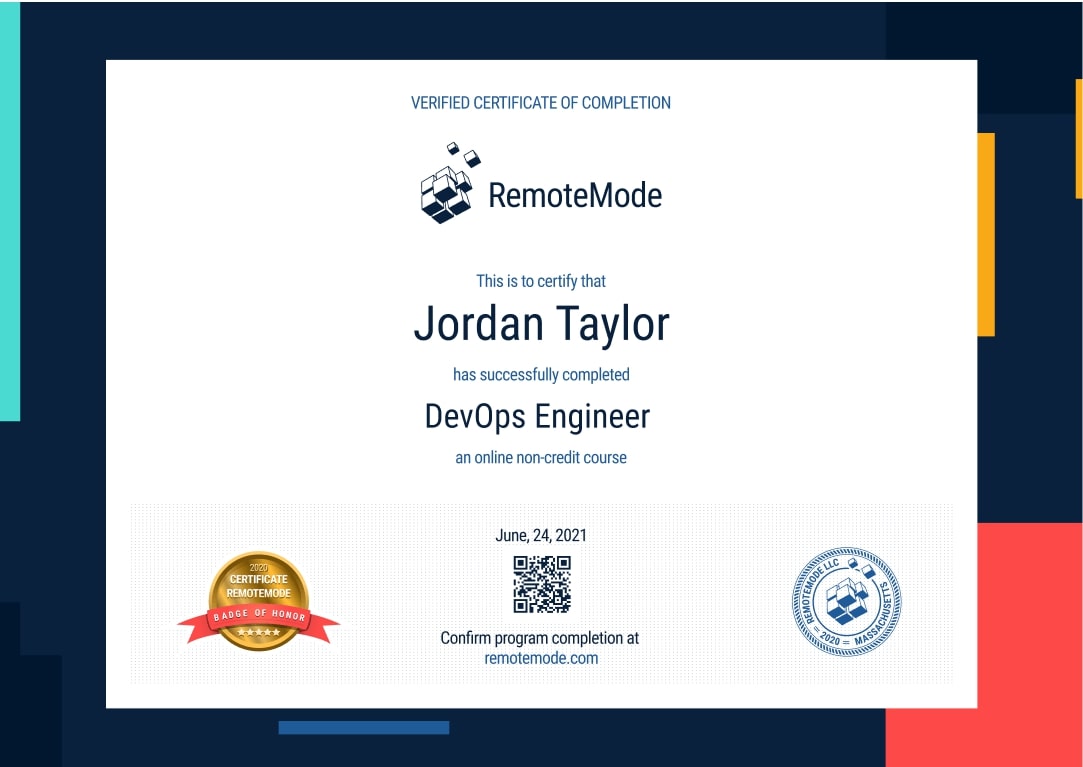Become a Mobile Developer
Mobile developers are experts in designing programs specifically for mobile devices and converting already existing programs to work smoothly on mobile devices. Mobile Developers use specific compilers and platforms that can simultaneously create code for Windows, iOS, and Android.
- 6-month long course
- 192 designed lessons
- 6 hours per week
- 148 hours in total



Mission Forecast for Mobile Developers
Landing Zone
As people more and more rely on mobile devices to get things done, the demand for Mobile App Developers will increase along with it. The successful Mobile Developer works in both the iOS and Android platforms and participates on a team that includes users experience designers, back-end server developers, and quality assurance engineers. More than 1,874,900 Mobile Developer jobs existed in the US in 2020, growing steadily every year.
Mission Objective (Who’s Hiring Right Now)
Mobile Developer Overview
Over 7,000 companies are solely dedicated to building and adapting apps for mobile. Thousands of companies have their own development team along with these outsourced companies. There is a projected 22% growth in this field, far above average.
- + 6-month long course
- + 6/hr a week, go at your own pace
- + 192 on-demand lessons
- + 148 hours of learning materials
- + Receive a certification confirming your training
- + Participate in real-life Virtual Lab projects
- Work with multiple programming languages and compilers to get work done swiftly and effectively.
- Collaborate with other teams to help increase the usefulness of the end product.
- Test, debug, and create applications.
- Build and test prototypes.
- Create and participate in focus groups.
- Submit apps to app stores for user installation.
Prepare for Liftoff
Complete Android Development
This course details the fundamental aspects of developing applications through the Android Operating System. It teaches individuals aspiring to be Android app developers the ropes around app development which largely focuses on the environment, how to start a project, and how to publish applications.
Who is this course for?
Over the past years, there has been an explosion of app development, be it for Android or iOS. This resulted to more avenues for development and lucrative endeavors for professional developers. This course rides along the seemingly ceaseless wave of innovation in the app development industry by inviting app developers, may they be novice or tenured, to begin the learning journey with us.
Course Prerequisites and Skills to be developed
Prerequisites:
- Parties wanting to take his course should have a grasp of how the Android Operating System, specifically with Android SDK and Android Studio.
- It is desirable for the learners of this course to at least have a year's experience of developing software applications
- It is recommendable for learners to have a background in programming with Java
- An understanding of XML for data encoding is also be desirable
Skills to be developed:
- Further knowledge and technical know-how on programming with Java and XML
- Creation of Android applications
- Usage of databases for data storage from Android apps
- Creation of a User Interface
- Deployment of applications
Complete Android Development Overview
Part 1 of 29: Get Started
This lesson walks learners through what Android is, what its development environment is like in light of the new updates and developments, and the many opportunities that have been opened of late for Android developers.
Part 2 of 29: Development Intro
This lesson introduces learners to the different aspects of Android's environment. The learners would be introduced to Android Studio and how it functions during production.
Part 3 of 29: Android Ins and Outs
This lesson runs learners through the ropes of the actual Android development process, its strengths, limitations, and some professional recommendations as to how the performance could be bettered.
Part 4 of 29: Quiz Application
This lesson details how learners can go about creating a Quiz application through Fragments and API. The learners would be able to design layouts, develop the app through Java, and how it should be deployed.
Part 5 of 29: Connect to the Web
This lesson teaches its learners how to develop apps that are connected through a network. This lesson walks the learners through the best practices for more protected network communication, choosing an HTTP client, resolving DNS queries, encapsulating network operation via a repository, and surviving changes in configuration.
Part 6 of 29: Trivia Application
Much like the Quiz Application, this lesson walks learners through the development of a Trivia Application.
Part 7 of 29: Persistence Shared Prefs
This lesson introduces learners to Shared Preferences in Android. Here, they would be made to understand how they can store and retrieve small, primitive data as value pairs.
Part 8 of 29: Persistence and Database
This lesson gets learners started with Data Persistence for applications developed through Android. Through this lesson, learners are let in on various app storage options in a database which includes Cupboard, Realm, and SQLite.
Part 9 of 29: Listview and RecyclerView
This lesson details what ListView and RecyclerView are in Android development. The lesson discusses how RecyclerView etches data and uses it to fill the layout, while ListView is meant for items that have the same count and screen size.
Part 10 of 29: Baby Needs App
This lesson details how a developer can go on creating and deploying a Baby Needs App.
Part 11 of 29: More Baby Needs App
This lesson discusses the other applications that help in family management.
Part 12 of 29: Android Room
This lesson introduces learners to Android's Room database. They would be made to understand that the Room is a recommendable approach for fluency in database access.
Part 13 of 29: Location and Maps
This lesson discusses how to develop location and map applications for daily and long road travel.
Part 14 of 29: More Location and Maps
This lesson cites the many other locations and map applications available in the app market. The lesson weighs in on the effectiveness of these applications and what developers need to improve on.
Part 15 of 29: Earthquake App
This lesson walks learners through the development of an Earthquake Application. The learners are taught how to create functions for analysing seismic activity.
Part 16 of 29: Finish Earthquake App
This lesson discusses how the learners would be able to create a tool that employs a USGS feed that shows users recent earthquake activity. The learners are taught how they can produce various functions such as adding activities and a List View control.
Part 17 of 29: Android Media
This lesson covers the handling the core APIs produced for audio and video data. This lesson discusses the most-used classes for playing and recording media within Android applications.
Part 18 of 29: Android Animation
This lesson introduces learners to various animation APIs that are available so as to add motion in an application's User Interface. The learners would be made to understand that animations would give applications a more polished finish and give app users an idea of what happens to the app in transition.
Part 19 of 29: Fragments in Android
This lesson teaches learners that a Fragment is the reusable portion of the User Interface of your application.
Part 20 of 29: More Fragments in Android
This lesson will further the discussion on Fragments. This tackles Fragment Manager, Fragment Transaction, Fragment Lifecycle, the animated transitions between the Fragments, and more Fragment facets.
Part 21 of 29: Realtime Database
This lesson details how learners could work with Realtime Database in Android.
Part 22 of 29: Journal Application
This lesson teaches learners how they can develop a journal application.
Part 23 of 29: Setup Journal Post Screen
This lesson details how a developer can set-up a Journal Post Screen for the Journal App.
Part 24 of 29: List Activity and RecycleView Adapter
This lesson details how a developer can create dynamic lists through RecyclerView in Android and why it needs an adapter to populate views with a user's data.
Part 25 of 29: UI Issues
This lesson walks learners through the usual issues that developers encounter with creating User Interfaces.
Part 26 of 29: Drawing in Android
This lesson details how developers can create drawing objects in Android.
Part 27 of 29: Machine Learning
This lesson discusses what Machine Learning is in Android Development. This details that Machine Learning is a programming technique that provides apps the capability of automatically learning and improving user experience.
Part 28 of 29: Android Tools and Monetizing
This lesson discusses how developers can create functions that allow them to earn from these applications.
Part 29 of 29: Publishing Apps
This lesson discusses the process of publishing an Android application post development.

Mission Control
- Stay focused with a mentor’s help and support
- Build a real portfolio with Virtual Lab Projects
- Compete with classmates in a virtual classroom
- Measure your progress with the Activity Tracking Log
- Make sure you get the job with resume help and interview assistance
In Collaboration with
Chart Your Trajectory
Certificate of Completion
- Receive a certificate recognized by prevalent companies confirming your training
- Complete real projects in Virtual Labs
- Go at your own pace, learn your way
- Access course videos and materials 24 hours a day
- Take practical quizzes to keep you up to speed
- Classes created and mentored by industry leaders

Grow into a Mobile Developer
Enter into the next generation of coding and help migrate old applications onto new software and create new programs as the industry develops. Use cutting edge tools to help streamline your process and create applications for both web and mobile simultaneously.
Program Forecast
- 6 months long, 6 hours per week
- 192 lessons in 148 hours
- Learn at your own pace
Virtual Lab
- Real Projects
- Create a working portfolio
- Receive expert feedback and mentoring
Career Services
- Interview preparation
- Resumé assistance
- Help with LinkedIn networking
Request More Information
View pricing and financing options